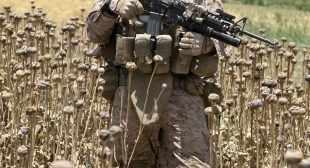
The COVID-19 pandemic has been a death knell to so many industries in Afghanistan. Charities and aid agencies have even warned that the economic dislocation could spark widespread famine. But one sector is still booming: the illicit opium trade. Last year saw Afghan opium poppy cultivation grow by over a third while counter-narcotics operations dropped off a cliff. The country is said to be the source of over 90% of all the world’s illicit opium, from which heroin and other opioids are made. More land is under cultivation for opium in Afghanistan than is used for coca production across all of Latin America, with the creation of the drug said to directly employ around half a million people.
This is a far cry from the 1970s, when poppy production was minimal, and largely for domestic consumption. But this changed in 1979 when the CIA launched Operation Cyclone, the widespread funding of Afghan Mujahideen militias in an attempt to bleed dry the then-recent Soviet invasion. Over the next decade, the CIA worked closely with its Pakistani counterpart, the ISI, to funnel $2 billion worth of arms and assistance to these groups, including the now infamous Osama Bin Laden and other warlords known for such atrocities as throwing acid in the faces of unveiled women.
- Tags:
afghanistan, cia, drug trade, imperialism, poppy
- Categories: World




